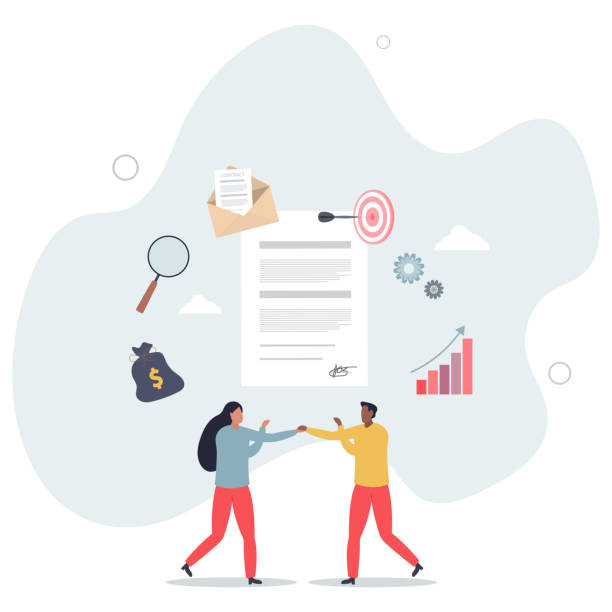Introduction to Multilingual Web Design
![]()
In today’s world, digital presence extends beyond geographical borders.
#Multilingual_Website_Design means creating a website whose content is available to users in multiple languages.
This approach enables businesses and organizations to target a broader audience worldwide.
The main goal of a multilingual website is to communicate effectively with users from different cultures and languages.
This is a vital strategy for globalization.
Many companies have realized the importance of this and are moving towards multilingual website design to expand their operations.
This process is not limited to text translation but includes complete localization of the user experience.
It involves paying attention to cultural differences, date and time formats, currencies, and even colors.
This section provides a fundamental explanation of the importance and nature of this concept.
Is your online sales not as expected? With RasaWeb, solve the problem of low sales and poor user experience forever!
✅ Increase visitor-to-customer conversion rate
✅ Create a pleasant user experience and boost customer trust
⚡ Act now to receive a free consultation!
Key Benefits of a Multilingual Website
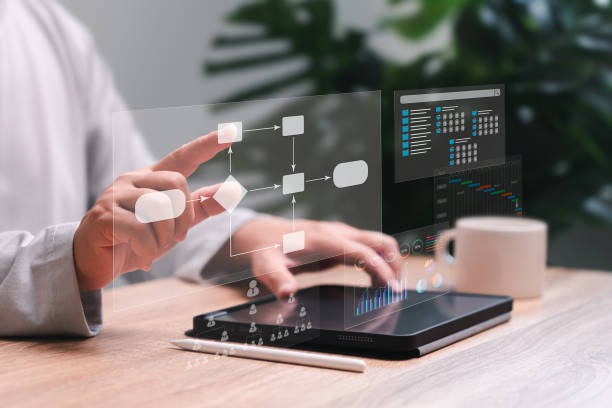
Multilingual website design offers countless benefits for businesses.
One of the most important advantages is expanding access to global markets.
When your website is offered in different languages, you can attract customers you previously lost due to language barriers.
This leads to increased site traffic and, ultimately, increased sales and revenue.
From an SEO perspective, multilingual websites can achieve better rankings in search engines in different countries.
This is a guide to improving your online visibility.
By targeting language-specific keywords, you can answer local searches.
Improved user experience is another key benefit.
Users prefer to interact with content in their native language.
This creates a deeper sense of trust and connection.
A multilingual website presents a professional and global image of your business.
This significantly contributes to your brand’s credibility.
Optimizing your website for different languages is a smart investment for the future.
Technical Considerations in Multilingual Website Design
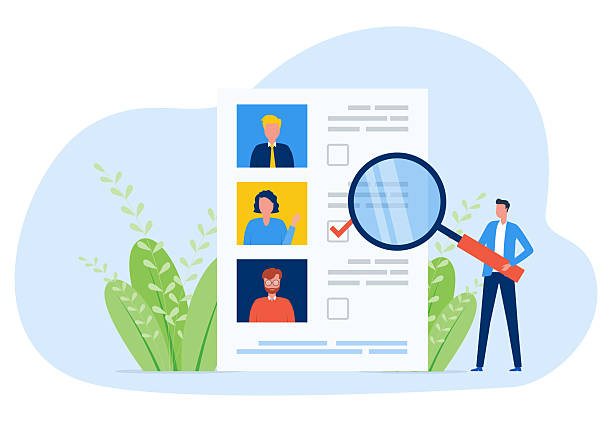
Implementing a multilingual website requires attention to precise technical details.
Choosing the right URL structure is one of the first and most important decisions.
You can use country-code top-level domains (ccTLD), subdomains, or subfolders for each country.
Each has its own advantages and disadvantages that should be chosen according to your goals.
Correct use of hreflang tags is crucial for Google.
These tags help search engines display the correct language version of the content to users.
Character encoding, especially UTF-8, is essential to ensure proper display of all languages.
This is a specialized tip in multilingual website design.
Also, ensuring the compatibility of the Content Management System (CMS) with multilingual capabilities is very important.
This section is an educational guide for developers and site administrators.
| Technical Consideration | Importance | Description |
|---|---|---|
| URL Structure | Very High | Choice between ccTLDs, subdomains, or subfolders for each language. Example: example.fr, fr.example.com, example.com/fr/ |
| Hreflang Tag | Crucial for SEO | Helps search engines show the correct language version to users. |
| Character Encoding (UTF-8) | Essential | Ensures correct display of all characters of different languages (especially non-Latin). |
| Choosing a Suitable CMS | Very Important | A Content Management System that supports built-in multilingual capabilities or powerful plugins. |
Content Management for Multiple Languages
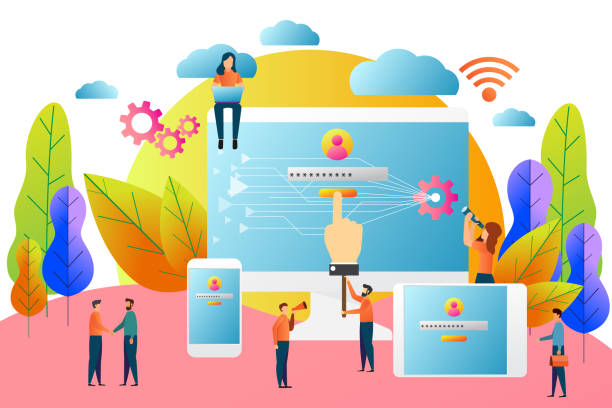
Content management in multilingual website design goes beyond simple translation.
Content must be localized, meaning it aligns with the culture, idioms, and sensitivities of the local audience.
Using native and specialized translators in your field significantly enhances the quality of translations.
Machine translation tools can be helpful but are never a substitute for human translation.
A strong content strategy includes continuous review and editing processes.
It is a debatable question whether AI tools can fully replace human translators.
It must be ensured that the main message and brand tone are preserved across all languages.
Also, managing images and videos to adapt to different cultures is important.
For example, images may need to be localized to be more appealing to the target audience.
Planning to update content in all languages simultaneously prevents inconsistencies.
Are you tired of losing business opportunities due to lacking a professional corporate website?
RasaWeb, with professional corporate website design, helps you to:
✅ Build a powerful and reliable image for your brand
✅ Convert site visitors into loyal customers
⚡ Get a free consultation right now!
SEO for Multilingual Websites

Search Engine Optimization (SEO) for multilingual website design has its own complexities.
Keyword research must be conducted separately for each language and geographical region.
Keywords that are effective in one language may have a different or even meaningless connotation in another.
Correct use of hreflang tags, as mentioned earlier, is crucial for directing appropriate traffic to the correct language pages.
Local SEO also plays an important role in this area.
This means that your website should be optimized for local searches in each country.
Building backlinks from reputable and relevant websites in each language increases your site’s credibility in that market.
This is an in-depth analysis of international SEO strategies.
Site loading speed and responsiveness on different devices should be optimized for all languages.
These factors directly impact user experience and SEO ranking.
User Experience in Multilingual Design
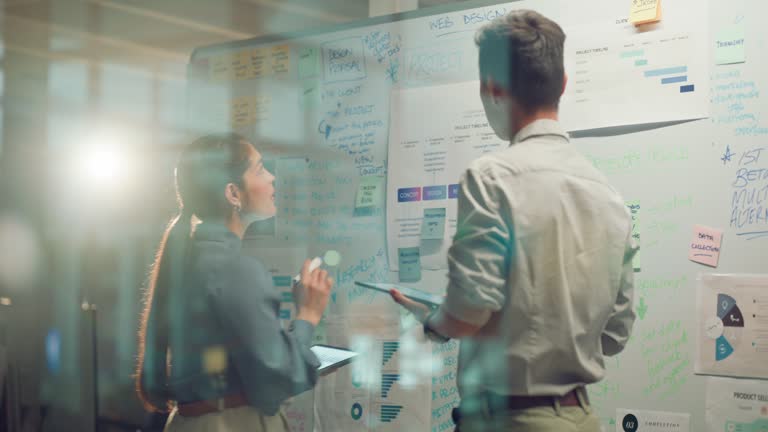
User Experience (UX) design in multilingual website design requires great sensitivity.
The Language Switcher should be easily accessible and understandable.
It is usually placed in the header or footer of the site.
It should be designed so that the user can quickly find their desired language.
Cultural differences in User Interface (UI) design must also be considered.
Colors, symbols, and even page layouts may have different meanings in various cultures.
This is a guide section for designers.
For example, some cultures read text from right-to-left, which requires a change in design orientation.
Site navigation should be logical and consistent across all languages.
Ensuring that input forms, dates, and units of measurement are localized for each region is important.
A good user experience can keep users engaged and entertained.
This leads to increased time on site and reduced bounce rate.
Choosing a Platform and CMS for Multilingual Websites

Choosing the right Content Management System (CMS) is a crucial step in the multilingual website design process.
Some CMSs, like WordPress, offer multilingual capabilities through plugins like WPML or Polylang.
Drupal and Joomla also support built-in multilingual features or powerful extensions.
For large and complex projects, custom platforms or Headless CMS might be better options.
This specialized choice should be made considering technical requirements, budget, and future scalability.
An important point is the platform’s support for Unicode and the ability to manage translated strings.
This is a guide for choosing the right technology.
| CMS Platform | Multilingual Support Method | Advantages | Potential Disadvantages |
|---|---|---|---|
| WordPress | Powerful plugins (e.g., WPML, Polylang) | Ease of use, large user community, numerous plugins | Increased complexity with plugins, need for update management |
| Drupal | Built-in multilingual capabilities and modules | Very powerful and flexible, suitable for large projects | Greater complexity for beginners, higher technical knowledge required |
| Joomla | Native multilingual support | Good usability, strong language support | Smaller user community compared to WordPress |
| Headless CMS (e.g., Strapi, Contentful) | API-first for content delivery to any platform | High flexibility, scalability, separation of backend and frontend | Requires frontend developers, higher implementation complexity |
Common Challenges and Pitfalls

Despite numerous advantages, multilingual website design can come with challenges.
One of the biggest challenges is managing costs and budgeting for continuous translation and localization.
Maintaining translation quality over time and ensuring the accuracy of information across all languages is difficult.
This raises the question of how best to manage these challenges.
Content inconsistencies between different language versions can also be problematic.
Technical issues such as problems with hreflang tags or incorrect URL structure can harm SEO.
Failure to consider cultural differences can lead to misunderstandings or even offense to audiences.
For example, using inappropriate images or idioms.
Continuous monitoring and maintenance of a multilingual website, including security and content updates, require careful planning.
This analytical section helps us prepare to face potential problems.
Did you know that customers’ first impression of your company is your website? Double your business’s credibility with a powerful corporate website from RasaWeb!
✅ Custom and eye-catching design tailored to your brand
✅ Improved user experience and increased customer acquisition
⚡ Get a free consultation!
Legal and Cultural Aspects

Legal and cultural aspects are very important in multilingual website design.
Data protection laws, such as GDPR in Europe, must be observed in all language versions.
This is important news for businesses operating internationally.
Privacy and cookie policies must be available in various languages and compliant with local regulations.
Furthermore, cultural differences in tone, writing style, and even the use of humor should be considered.
What is acceptable in one culture may be inappropriate in another.
This is a specialized tip for the content team.
Reviewing local advertising and marketing laws is also essential.
For instance, regulations concerning the display of prices or discounts.
Adherence to intellectual property rights and copyrights in different regions of the world must also be taken into account.
Future Trends in Multilingual Website Design
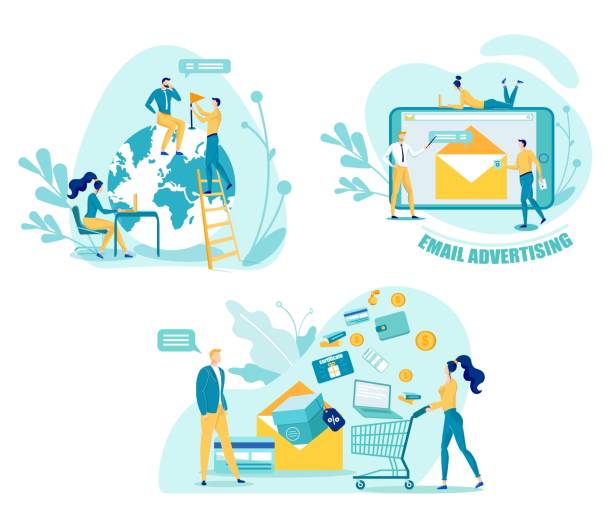
The future of multilingual website design is full of innovation and progress.
Artificial Intelligence (AI) and Machine Learning (ML) are changing the translation landscape.
Neural Machine Translation (NMT) tools are becoming increasingly accurate and natural.
This means reduced time and cost for initial content translation.
Automation of localization and content management is also a significant future trend.
Platforms that automatically optimize content for different regions are emerging.
This is exciting news for designers and developers.
Multilingual voice search and its importance for SEO are on the rise.
Users are increasingly using voice commands for search, and websites must be optimized to respond to these types of searches in different languages.
Augmented Reality (AR) and Virtual Reality (VR) can also play an important role in providing immersive multilingual experiences.
This analytical section shows us how to prepare for the future.
Frequently Asked Questions
| Question | Answer |
|---|---|
| What is a multilingual website? | A website whose content is available to users in more than one language. |
| Why should I make my site multilingual? | To reach more audiences in global markets, improve user experience, and increase international SEO. |
| What are the technical approaches to building a multilingual site? | Using subdirectories, subdomains, or URL parameters to separate languages. |
| What impact does multilingual design have on SEO? | By targeting local keywords and providing content in users’ native languages, the site’s ranking in search engines for those regions improves. |
| What are the challenges of multilingual website design? | Content translation management, support for Right-to-Left (RTL) orientation, technical issues related to language addressing, and maintaining design consistency. |
| How do we choose the languages for a multilingual site? | Based on target audience analysis, target markets, and current site traffic data (if available). |
| What is RTL support and why is it important for some languages? | Right-to-Left, is the display direction of text and page elements from right to left, which is essential for languages like Persian, Arabic, and Hebrew. |
| How do we manage multilingual website content? | Using Content Management Systems (CMS) with multilingual capabilities, translation plugins, or professional translation services. |
| What is the user experience (UX) like on a multilingual site? | The ability to easily switch languages should be provided, and the translated content should be of high quality so that users feel comfortable. |
| What are the common CMS platforms for multilingual sites? | WordPress (with plugins like WPML), Joomla, Drupal, and Shopify (with relevant settings or plugins). |
And other services of Rasa Web Advertising Agency in the field of advertising
Smart Reportage: An effective tool for digital branding by optimizing key pages.
Smart Reportage: A professional solution for increasing sales by focusing on precise audience targeting.
Smart Conversion Rate Optimization: A professional solution for analyzing customer behavior with a focus on optimizing key pages.
Smart Google Ads: Designed for businesses looking to manage campaigns through SEO-driven content strategy.
Smart Content Strategy: Professional optimization for campaign management using attractive UI design.
And over hundreds of other services in the field of internet advertising, advertising consulting, and organizational solutions
Internet Advertising | Advertising Strategy | Advertorials
Resources
Benefits of Multilingual Website Design
Challenges of Multilingual Website Design
Guide to Multilingual Website Design
Multilingual Website SEO Optimization
? Is your business ready to leap into the digital world? Rasaweb Afarin Digital Marketing Agency paves your way to success by offering comprehensive and innovative solutions. From professional website design and SEO optimization to managing targeted advertising campaigns, we are with you at every stage of your business growth.
📍 Tehran, Mirdamad Street, next to Bank Markazi, Southern Kazeroun Alley, Ramin Alley, No. 6

